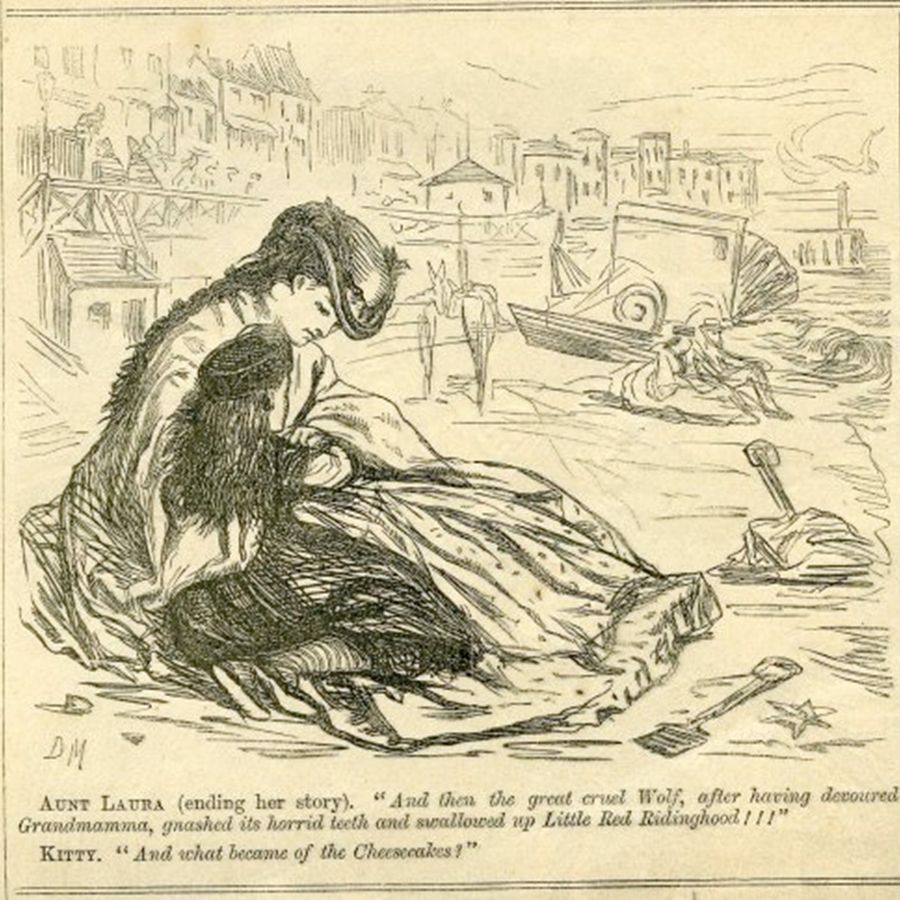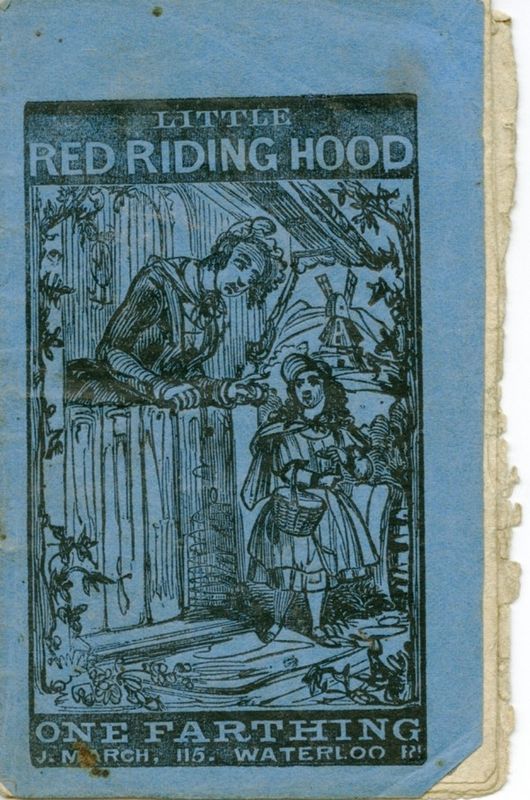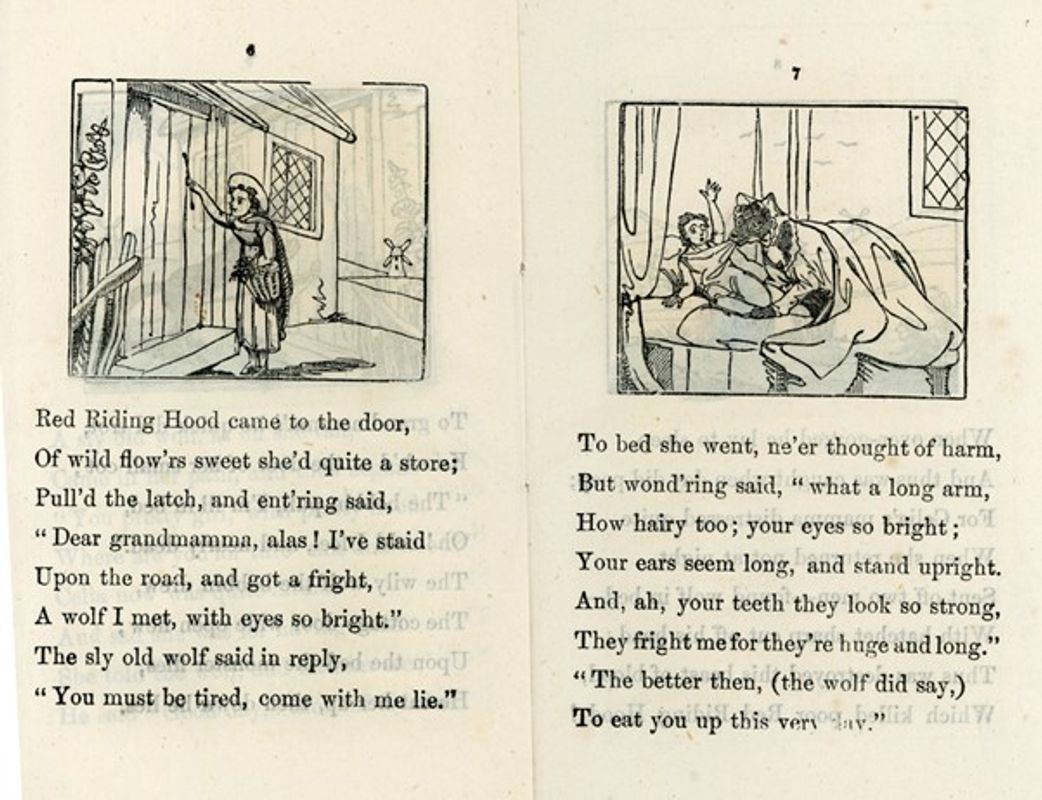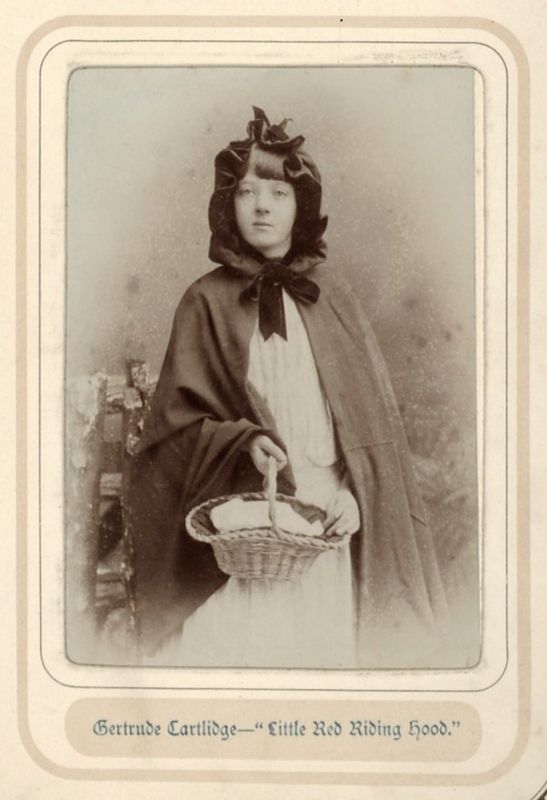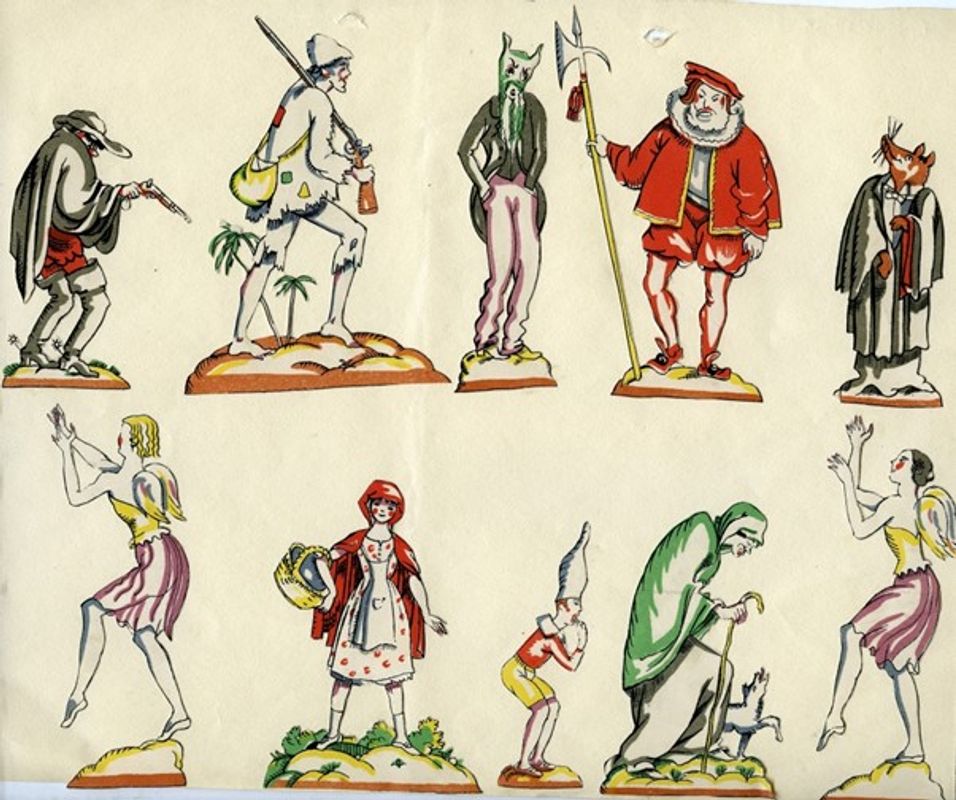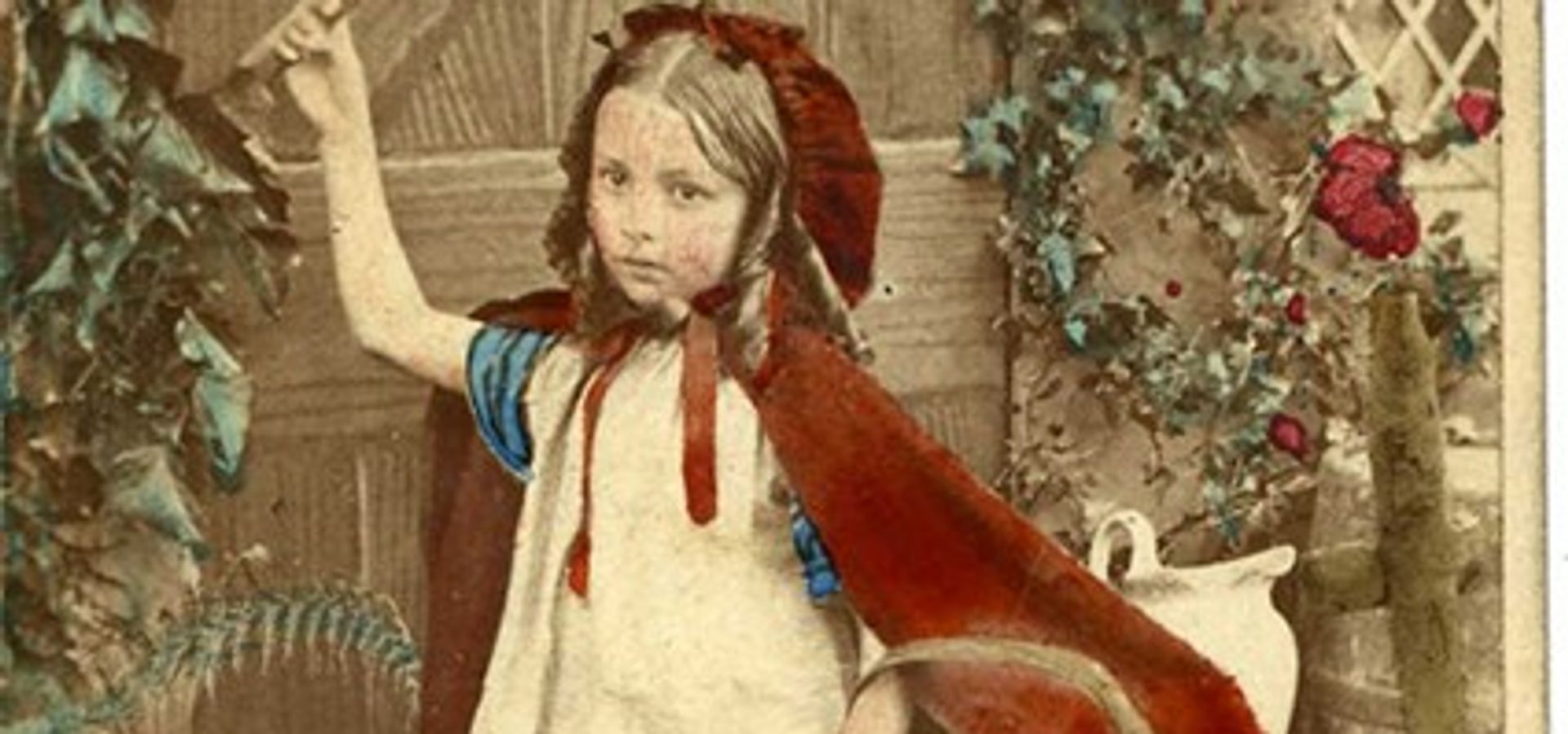
Imagining Little Red Riding Hood
Of the tales that are celebrated in the “Fairy Tales and Fantasy” exhibition at Abbey House Museum, probably one of the most frequently illustrated is that of Little Red Riding Hood.
As a story, its original versions are sombre and macabre cautionary tales in which the sweet innocent heroine pays dearly for her foolish and trusting encounter with the wolf in the forest (and for ignoring her mother’s advice). In Charles Perrault’s version from 1697 both Red Riding Hood (Le Petit Chaperon Rouge) and her grandmother are killed and eaten by the wolf and there is no happy ending. This is certainly the tale retold in the two earliest versions of Little Red Riding Hood in the Leeds collections.
When the Brothers Grimm published their take on the story in 1812, they obviously felt that their readers would want a less grim ending (no pun intended) so they introduced a hunter who arrives in time to kill the wolf and rescue Red Riding Hood and her grandmother. In the many re-tellings since, children’s authors have tried to soften the end of the story in different ways. In some the victims are cut alive from the wolf’s stomach (and replaced with stones). In others Red Riding Hood is rescued before being attacked and in the least blood-thirsty versions both Red Riding Hood and her grandmother hide in the cupboard while the wolf merely runs away.
The Little Red Riding Hood story in “Old Favourite Fairy Tales Told for the Hundredth Time” (written by H.W. Dulcken PhD and published about 1910-1914) is illustrated by two very contrasting artists. The monochrome engravings by Thomas Dalziel (1823-1906) show a terrifying wolf in quite graphic detail.
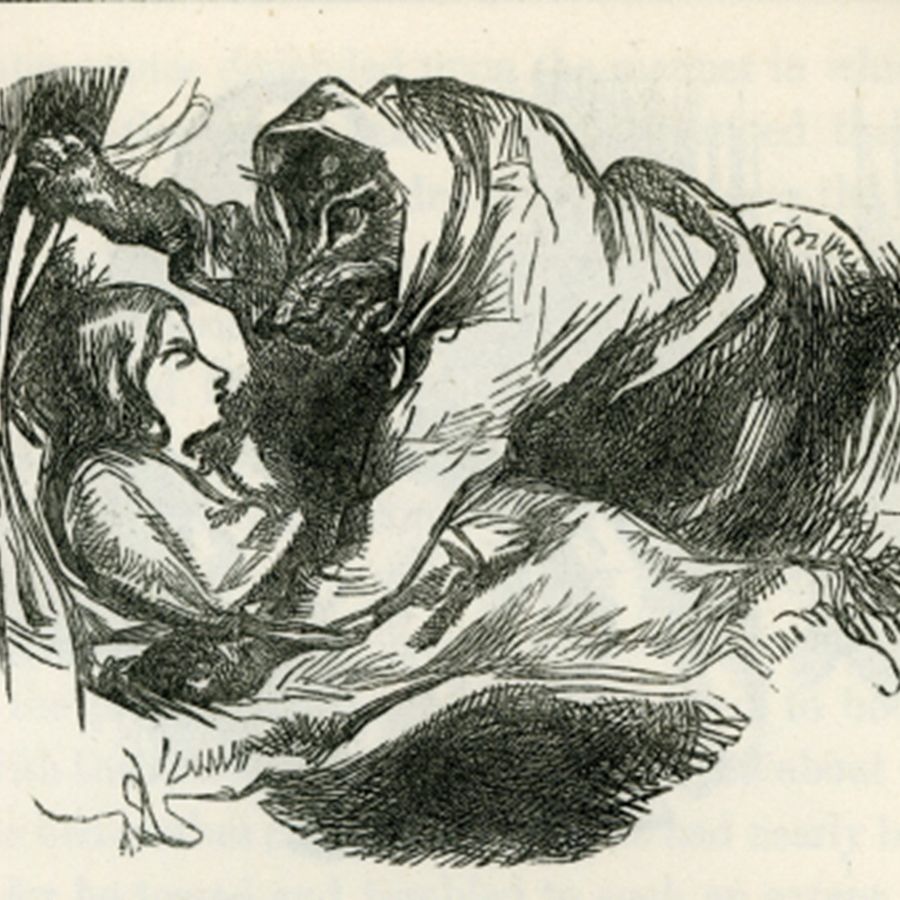
In contrast H.C. Sandy’s take is much more comic and playful with a rather absurd looking wolf tucked up in bed wearing granny’s nightie.
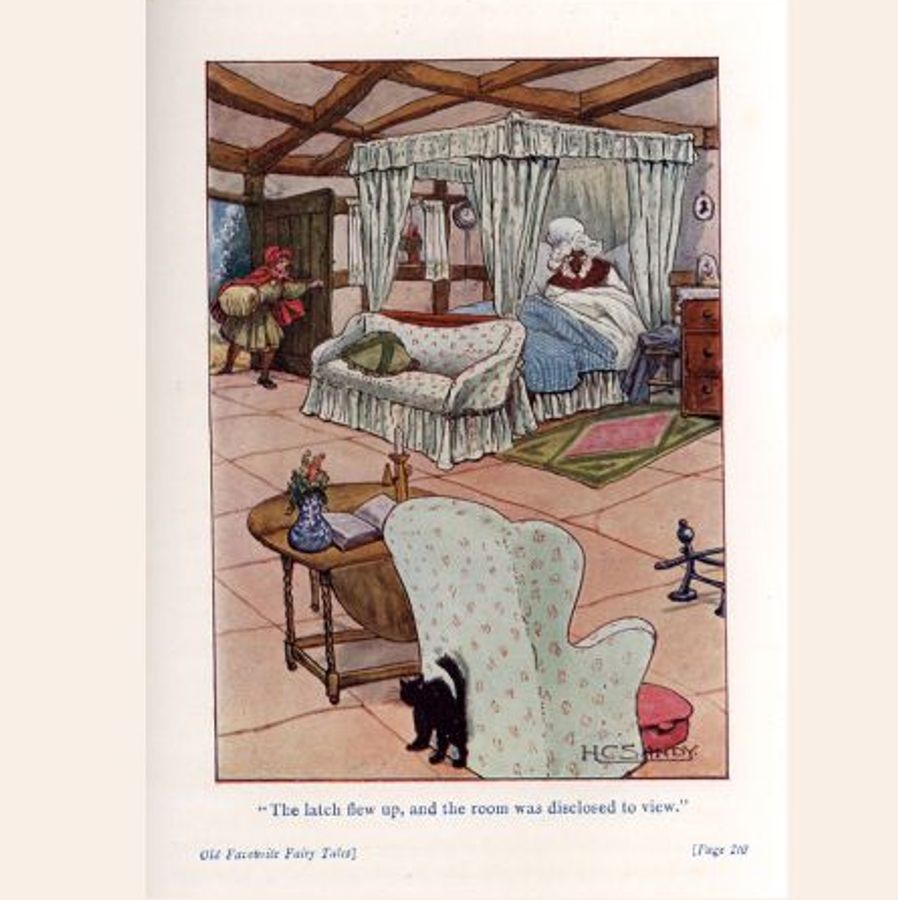
The version illustrated by Frank Adams in “My Nursery Story Book” published by Blackie & Sons Ltd. about 1930 also seems to be much less threatening and aimed at not scaring small children unduly.
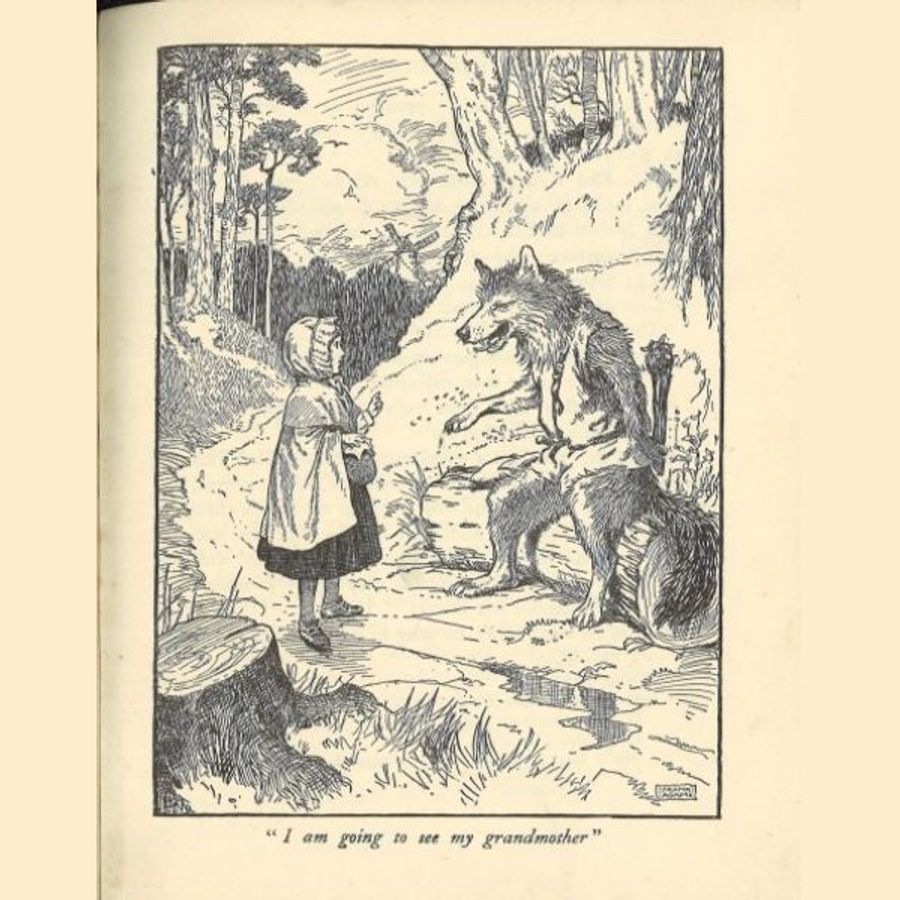
Red Riding Hood as a character seems to have become a favourite nursery character for fancy dress, dolls and toys. Most of these make little reference to the wolf, but just depict a girl with her distinctive cloak carrying a basket.
Of course, not every child was traumatised by a tragic ending, as shown in this Punch cartoon from the 1860s, in which my namesake asks “And what became of the cheesecakes!” – just in case you were wondering what Red Riding Hood was carrying in her basket.
